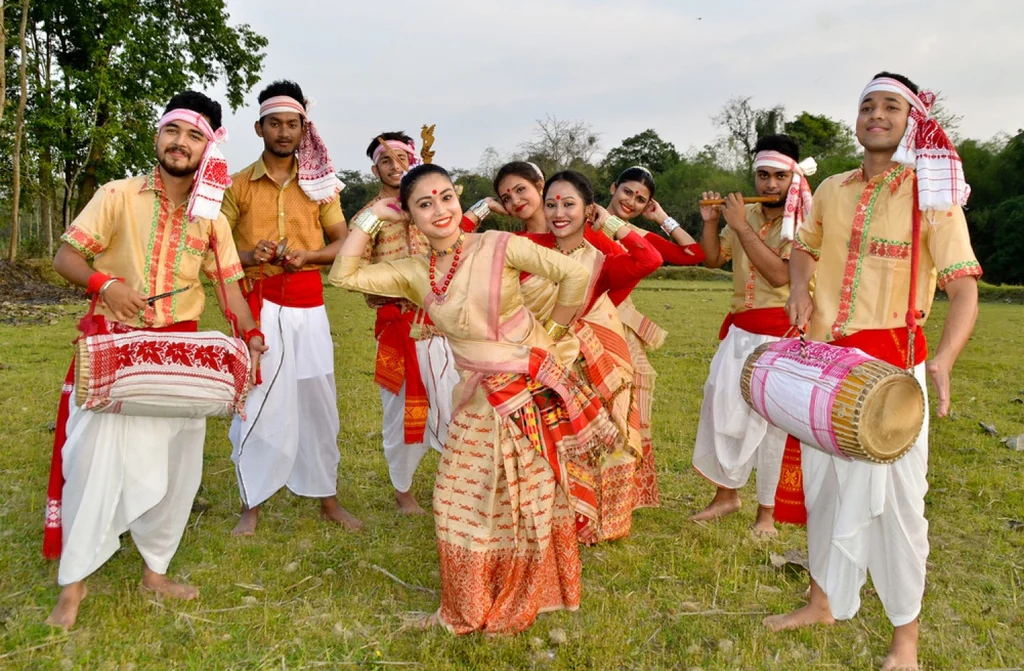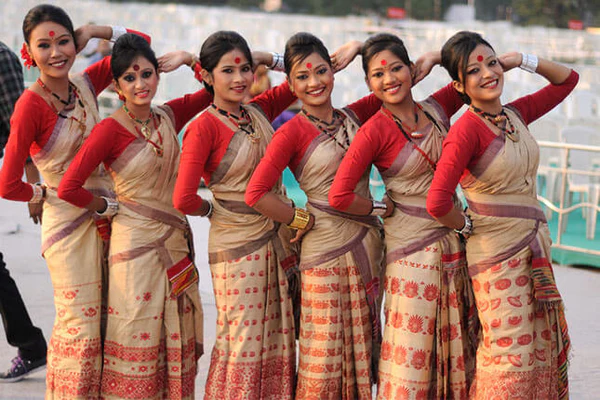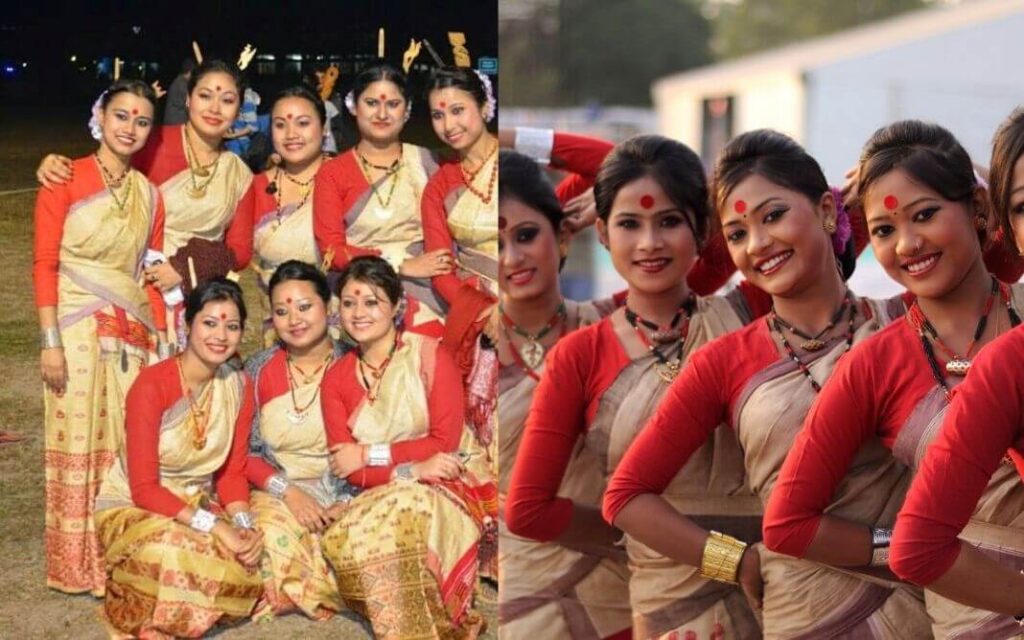In the northeastern part of India, Assam stands out for its remarkable diversity and beauty. The traditional dress of Assam reflects the region’s rich cultural heritage and historical significance. For generations, the people of Assam have preserved their cultural practices, and their traditional attire remains a testament to this heritage. Each garment, from the Mekhela Chador to the Gamosa, carries a story and symbolizes deep cultural values. Let’s delve into the traditional dresses of Assam, exploring their significance and the ways they embody the essence of Assamese culture.
Traditional Dress of Assam for Men

Assamese men’s traditional attire is a blend of simplicity, style, and practicality. These garments not only provide comfort but also represent the region’s cultural identity.
Dhoti
The dhoti is a quintessential part of Assamese men’s attire. This long rectangular piece of cloth is wrapped around the waist and legs, offering both comfort and flexibility in the humid climate. Assamese dhotis come in various colors and patterns, showcasing the region’s cultural diversity. Whether plain or adorned with intricate designs, the dhoti is more than just a garment; it is a symbol of Assamese tradition and continuity. Worn with a kurta or shirt, the dhoti embodies both elegance and historical significance, reflecting the deep-rooted cultural values of Assam.
Kurta
The kurta is another staple in Assamese men’s traditional wardrobe. Made from luxurious cotton or silk, the kurta is known for its timeless appeal and elegance. It features a long tunic shape with elaborate embroidery around the collar, cuffs, and placket. This intricate embellishment highlights the craftsmanship of Assamese artisans. Available in a range of colors from earthy tones to vibrant hues, the kurta is versatile for both formal and casual occasions. It allows men to express their style while adhering to cultural norms.
Gamocha
The gamocha is a versatile and symbolic piece of Assamese clothing. This rectangular cotton fabric, adorned with intricate patterns, is used in various ways – as a towel, scarf, or headgear. The gamocha represents Assamese pride and cultural heritage. It is not only practical but also a symbol of respect and hospitality. In Assamese culture, the gamocha fosters social connections and reflects the warmth and camaraderie of the people.
Jorhat Topi
The Jorhat Topi is a traditional conical hat made from bamboo and cane, intricately woven with colorful threads and embellishments. This hat is a significant part of Assamese heritage and is worn during festivals and important occasions. The Jorhat Topi adds a touch of regional charm to the attire, symbolizing the rich cultural traditions of Assam and enhancing the wearer’s connection to their cultural roots.
Traditional Dress of Assam for Women

Assamese women’s traditional attire is a celebration of the region’s artistic creativity and cultural richness. From the Mekhela Chador to the Japi, each garment reflects the elegance and beauty of Assamese tradition.
Mekhela Chador
The Mekhela Chador is a quintessential Assamese outfit, representing cultural sophistication and artistic heritage. It consists of two pieces: the Mekhela, a flowing skirt, and the Chador, a draped cloth covering the upper body. Made from silk or cotton, this attire is adorned with elaborate designs and motifs that reflect Assamese artistry. The Mekhela Chador is not just a garment but a symbol of Assamese identity, often worn during festivals and special occasions to showcase the wearer’s grace and cultural pride.
Riha
The Riha is a traditional Assamese blouse that complements the Mekhela Chador. Crafted from silk or cotton, it features intricate embroidery on the neckline, sleeves, and hem. The Riha is known for its elegant design and craftsmanship, reflecting the wearer’s personal style and the occasion’s formality. It adds a touch of sophistication to the traditional ensemble, enhancing the overall aesthetic of Assamese women’s attire.
Assam Silk Saree
The Assam Silk Saree is a symbol of grace and tradition. Made from high-quality Assam silk, this saree is renowned for its lustrous texture and vibrant colors. Each saree is meticulously woven by skilled artisans, featuring designs such as paisleys, flowers, elephants, and birds that celebrate Assam’s cultural heritage. The Assam Silk Saree is a preferred choice for special events, representing both elegance and the region’s rich textile tradition.
Japi
The Japi is a traditional bamboo and cane headgear worn by Assamese women during festivals and cultural gatherings. This conical hat, adorned with colorful threads and embellishments, reflects Assamese craftsmanship and cultural values. Beyond its decorative appeal, the Japi symbolizes unity, celebration, and traditional wisdom, connecting women to their cultural heritage.
Conclusion
The traditional dress of Assam embodies the region’s cultural richness and historical significance. From the elegant Mekhela Chador and sophisticated Riha to the versatile Gamocha and distinctive Jorhat Topi, each garment tells a story of Assamese tradition. These attires are not just clothing but symbols of cultural pride, preserving the region’s heritage for future generations. Assam’s traditional dresses, with their intricate designs and cultural symbolism, are a testament to the state’s enduring commitment to preserving its unique cultural identity.


